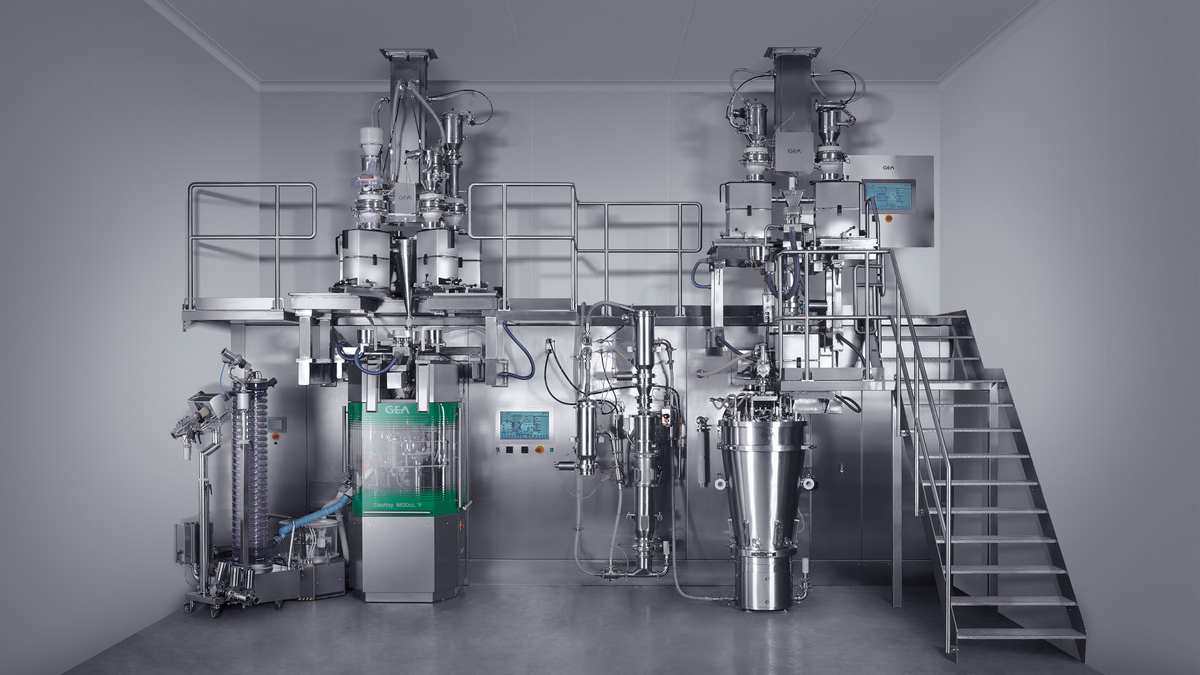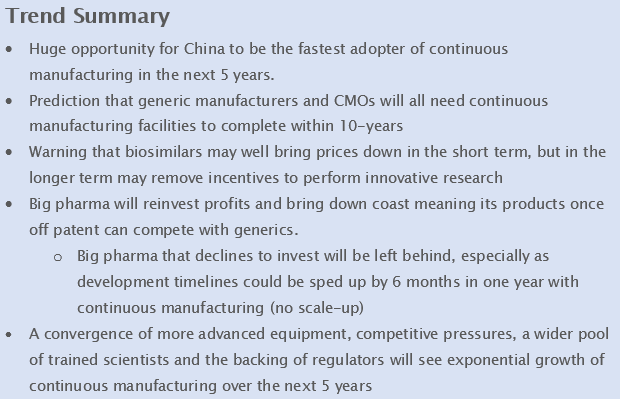
If you squint your eyes and look through a pair of reversed binoculars, you can see these arguments applied to the ‘large’ commercial tablet presses in the 1940s, assembly lines for cars in 1905, interchangeable parts for airliners in 1920, and almost any innovation over the last 150 years. In truth, these people tend to defer to ‘common knowledge’ such as, “A train can never go above 40 mph (67 kph) because people couldn’t breathe at that speed”, rather than try to prove whether something will or won’t work.
Indeed, as my father told me, “If you don’t want to do something, you will find an excuse; if you want to do something, you will find a way.” We also have industry ‘experts’ who declare that pharma and biopharma can’t do PAT/QbD/CM because, no matter how quickly steps are enhanced, it is merely a batch-driven technology, so CM cannot be applied. They see CM as week-long moving product processes.
In the 1970s, the Japanese surfactant manufacturers used CM in its simplest form: a long line of railroad tank cars, containing fatty alcohols or fatty acids; a second string of cars, on an adjoining track there was a string of cars with chlorosulfonic acid, a third (smaller) line of cars contained caustic (NaOH solution), and, lastly, a line of empty tank cars. The fatty acid/alcohol is mixed/reacted in a larger tube, transferred to a second reactor to be quenched with the caustic, then continuously pumped into the empty railcars.
The ‘pharmaceuticals can’t be done this way’ crowd seems to miss the crux of the matter: detergent brings manufacturers pennies per gallon as a profit, while (top selling) drugs can glean dollars to thousands of dollars per tablet. There has been far less financial impetus to streamline the process, when compared with consumer products. There have always been dozens of laundry detergents on the market. They do not have the same kind of patent protection as a new drug entity (NDE), where the sole provider of that drug can charge whatever they wish with no concern of economizing the production process, so they need to generate the best product possible as quickly as possible. In the new economy, the new ‘fight or flight’ reaction may be expressed in economic terms: modernize or close your doors.
In short, no one does anything unless they feel a need. As long as the US Congress, for example, has a political agenda to allow companies to charge whatever they can for their products, even for products off-patent (e.g. following the recent announcement that Pfizer would increase the price of dozens of drugs, President Trump took to Twitter to lambaste the company, saying that it should be “ashamed”). Initially, Pfizer defended its decision and said the new prices weren’t likely to impact consumers. But now, Pfizer’s CEO has said it will delay the scheduled price increases until January first and give the president “an opportunity to work on his blueprint to strengthen the healthcare system and provide more access to patients.” Part of the changing landscape is that Pfizer (like many of established pharma giants), is facing an aging population and many older products going off-patent, and so, is reshaping its structure into three businesses.
These include Innovative Medicines (biological science and a new hospital medicines business), Established Medicines (to include sales for older drugs like Lipitor and others that have lost patent protection) and Consumer Healthcare (for over-the-counter medicines). This seems to be an industry-wide trend and places production costs under a new microscope. With multi-country competition (especially those with far lower labor costs), many nations imposing pricing restrictions, and the cost of R&D not becoming lower, simply raising prices to consumers is rapidly becoming a liability, no longer the ‘go-to’ choice.
The companies are also outsourcing much of their work as they shrink to ‘virtual’ companies, concentrating on R&D. They are using contract manufacturers for packaging (old-hat), distribution (also, been around for a while), and now, for manufacturing off-patent products (to compete with generic houses), and even some research (adding to the previous relationships with research universities). As the supply-chain (everything from raw materials through delivery to pharmacies and hospitals) stretches over thousands of miles and dozens of countries, the crux of the problem can be distilled to one word: Quality.
Now, when our industry began as a commercial enterprise (around WWII), it moved from the back rooms of pharmacies (chemists to Europeans) to factories. The rules, as is the case for any innovation, lagged behind (e.g. road rules, following the popularity of automobiles). When a neighbourhood pharmacist made a lot of 50-100 pills (no longer made, replaced by tablets) or capsules, “quality” merely meant using proper materials and accurate weights. The earliest production facilities could only produce product in the thousands, so the USP suggestions for analysis were deemed sufficient. In reality, compendial tests are almost all for identity (is it lactose?), purity (heavy metals, moisture), and final assay (originally monographs cited titrations, now chromatography). The analysis situation 60-70 years ago was clearly different from today in several ways.
- The original compendial tests assumed that:
- All APIs were synthesized in-house or purchased from domestic sources, both under FDA (or EMEA) surveillance
- Excipients were obtained domestically from sources that were under FDA or (EMEA) supervision
- Suppliers were meticulous and “tests” were merely to assure the correct grade of material.
- The supply chain was far different then, but has changed in several ways:
- A typical Pharma company will purchase most, if not all APIs from third-party suppliers, often in different countries
- Excipients are also purchased, if not directly from other countries, then from distributers who, in turn, purchase from multiple countries
- Many larger Pharma houses (and generics) produce products in other countries where they source their own APIs and excipients; seldom
can any Agency find all the sources without some difficulty.
So, you may well ask, “How can we assure product quality and consistency from country to country?” Well, the first attempt was to initiate the USFDA PAT (process analytical technologies) draft Guidance in 2002 (final 2004). Its purposes were:
- To assure the grades and purity of APIs and excipients: ID, polymorphic forms, particle sizes, residual solvents, crystallinity, etc
- To check each step
- To use the monitoring data from each step to (eventually) control that step, assuring each point of the process was in control
- Assure both quality and consistency throughout each process and from batch to batch.
With PAT in place, manufacturers had control and a hard copy of data proving they were in control, throughout the process. The fine-tuning Guidance concerned Quality by Design (QbD), where known and/or unexpected variation in raw materials and intermediate products were anticipated and the effect on the final product was known, allowing operators (the collective gasp you will hear is from ‘old-school’ QA people) to make changes to the process to assure compliance with known acceptable product parameters.
OK, now we have the tools necessary to assure that a product being made in France is (essentially) the same as in the US or Poland or Malaysia, with a ‘paper-trail’ to show how the process proceeded. As new, rapid, reliable monitoring tools became available, pure economics dictated where materials were purchased or fabricated. Now that spectrometric methods can assure similarity or equivalence of materials, we simply need to assure that the final products are equivalent.
We work on the assumption that, with guidelines from ICH, FDA, and EMA for the calibration, validation, and application of spectrometers in pharmaceuticals, performing an analysis in Thailand will give the same results as would be seen in Switzerland. What has not been standardized was finished product analytical methodology and in-process controls. Let us assume for a moment (I am blindly optimistic here) that all jurisdictions suddenly homogenize finished product specifications. NOE, we can work on making the same product at every location.






